Key Features
- Price: 300 USD
- Release Date : 22nd October 2023
- ATX Form Factor / 8 PCB layers + 2 Ozz copper layers
- Intel Z790 chipset
- LGA 1700 CPU socket
- CPU Support
- 12th Intel Core CPU
- 13th Intel Core CPU
- 14th Intel Core CPU
- x4 48GB 8,266 MHz DDR5, maximum 192 GB
- x3 PCIe x16 ( x1 PCIe 5.0*16, x1 PCIe 4.0*4, x1 PCIe 4.0*4 )
- Back IO :
- HDMI 2.1
- DP 1.4
- x4 USB 2.0 RX/TX 480 Mbps
- x2 USB 3.1 RX/TX 5 Gbps
- x2 USB 3.2 2nd gen. Type-A + TYPE-C RX/TX 10 Gbps
- x1 USB 3.2 2nd Gen 2×2 Type-C RX/TX 20 Gbps
- Surge protected 2.5GbE LAN controller
- WiFi 7 / BT 5.3
- Realtek ALC 1220-VB Codec 7.1 channels audio,
- STORAGE
- x4 M.2 SSD (x4 PCIe 4.0)
- x6 SATA 3 — RX/TX 6 Gbps
- Tangible upgrades when compared to the Z790 AORUS ELITE AX
- Same price as Z790 AORUS ELITE AX
- Upgraded PCB (8 layers)
- Upgrade VRM
- Upgraded RAM speed
- No DUAL GPU Support
AORUS is GIGABYTE’s more premium/gaming focused product and the ELITE its entry point.
The X line up is the AORUS refresh family of boards Gigabyte has released to accommodate the new 14th Gen of Intel CORE processors. And it does come with a few new very premium features!
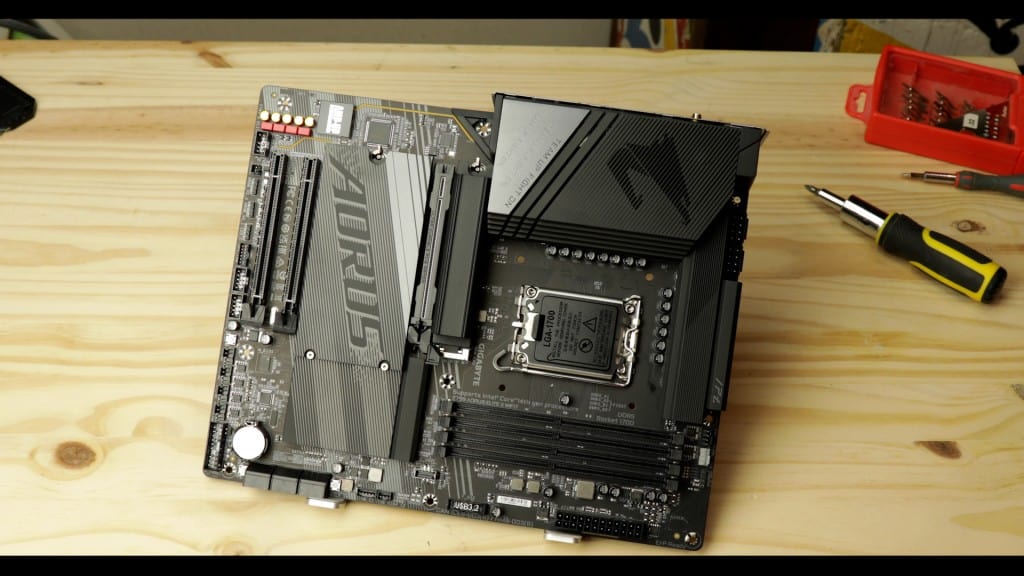
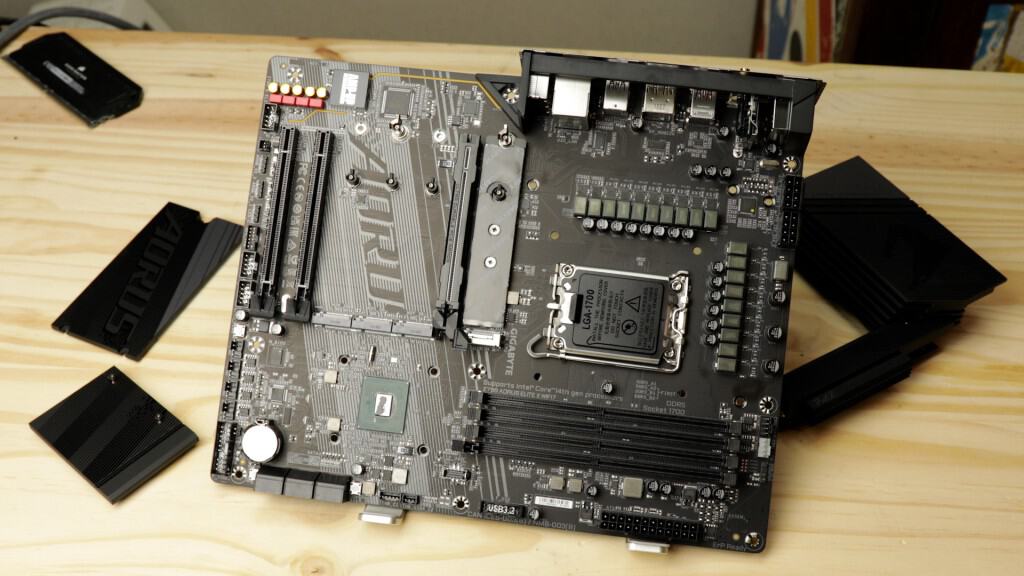

PCB
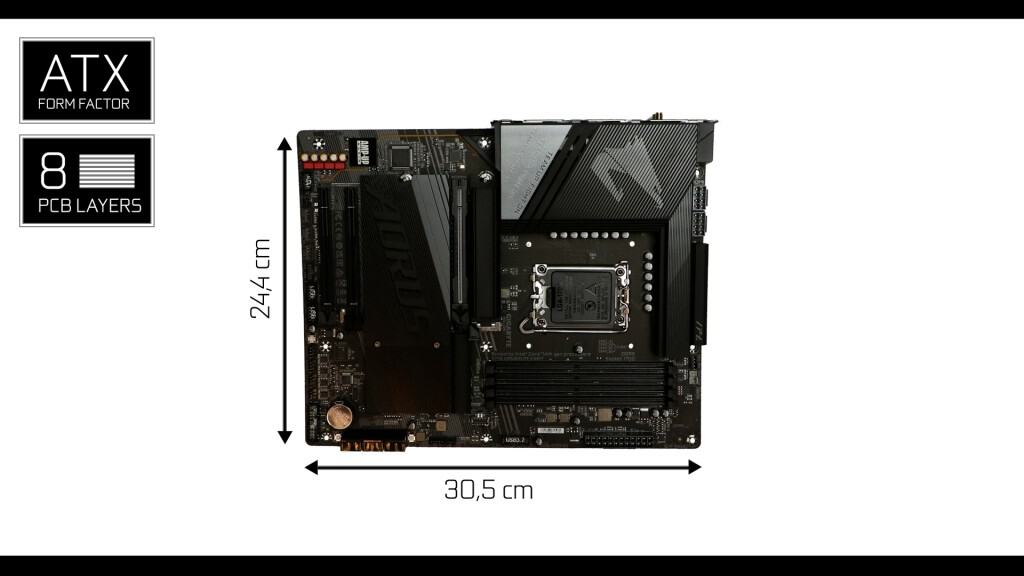
We are dealing with a very premium 8 PCB layered ATX board, which is what you want to see low cross component and PCIe signal bleeding. It costs more, adding PCB layers is probably the most expensive thing a manufacturer can do, but its repercussions are deep and touches about every fundamentals on your board:
- Heat dissipation
- Signal interferences and hence system stability
- And the overall motherboard lifespan.
And to see it here is a major premium boost for the Elite, especially when compared to its earlier ELITE AX version which only had a more classic 6 PCB layering.
LGA 1700
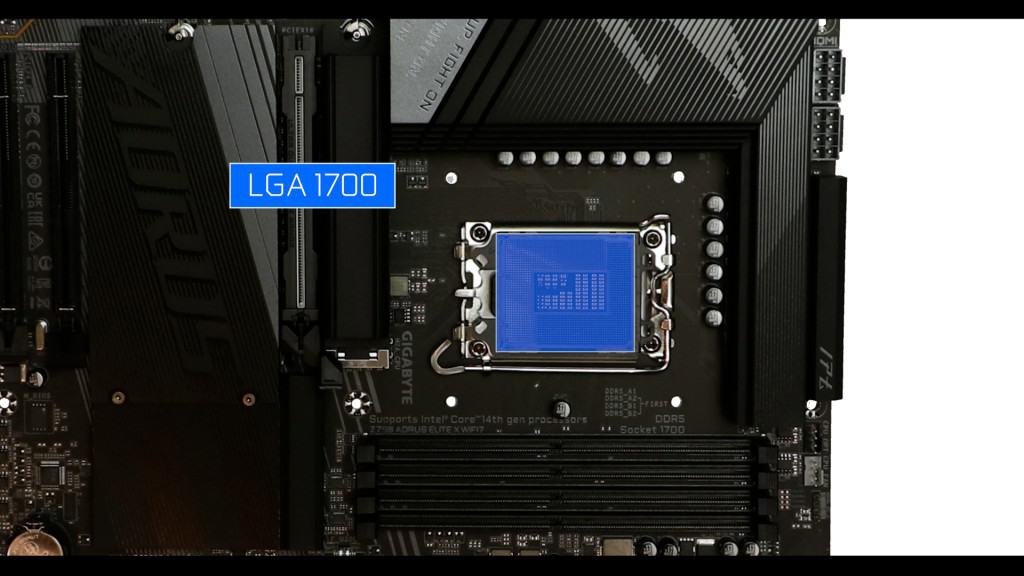
Our LGA1700 socket can support :
- 12th Gen Intel CORE CPU
- 13th Gen Intel CORE CPU
- 14th Gen Intel CORE CPU
As CPU socket goes, we have our usual LGA 1700 Foxconn ILM, which allowed the introduction of both PCIe 5.0 and DDR 5 standards, and on this board, officially supports the brand new 14th Gen of Intel Core processors!
For the first time in a very long time (if not ever), Intel has a CPU socket which did support 3 consecutive generations of processors, which I hope is a trend we will keep seeing on future generations of motherboards!
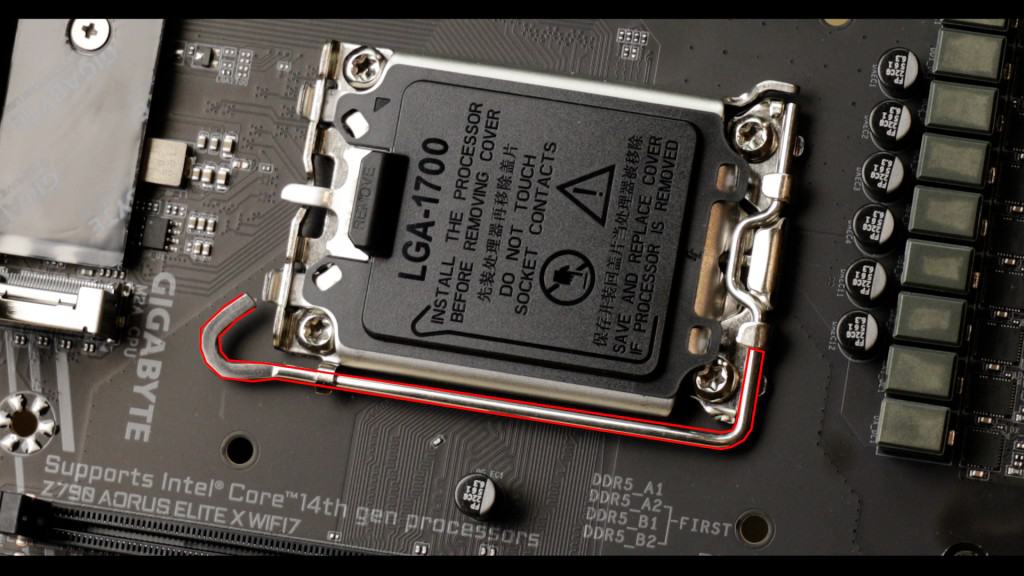
Little kudos to FOXCONN for finally trying to improve the CPU locking mechanism and featuring a longer and better locking lever.
VRM

- CPU : x16 90 AMPS RENESAS ISL 99390 power phases organized in a 8 parallel phase configuration
- VCCAUX: x2 60 AMPS ONSEMI NCP303160 power phases
- VCCGT: x2 RENESAS ISL 99360 power phase
- VRM CONTROLLER : RAA 229130
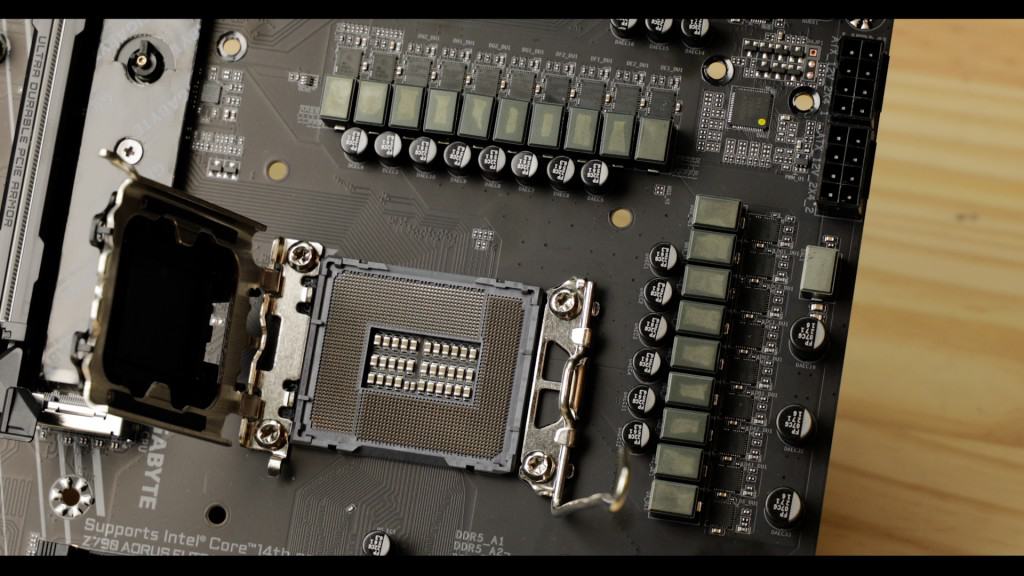

The Z790 AORUS ELITE X is quiet simply KILLING it and imposes a sizeable upgrade when compared to its twin.
We now have x19 90A and 60A power stages, organized in an 8+2+1 phases configuration. That is 1,440 CPU centric Amperes here to face any Intel Core CPU the past 3 Generations has to throw at it. Especially suited for the substantially higher core count CPUs suck as i7s and i9s. That’s also 320 more CPU CENTRIC AMPS then seen on the Z790 AORUS ELITE AX… so yeah again… big Jump forward!
VRM Cooling
Cooling wise, also have subtle and sometime invisible upgrades.
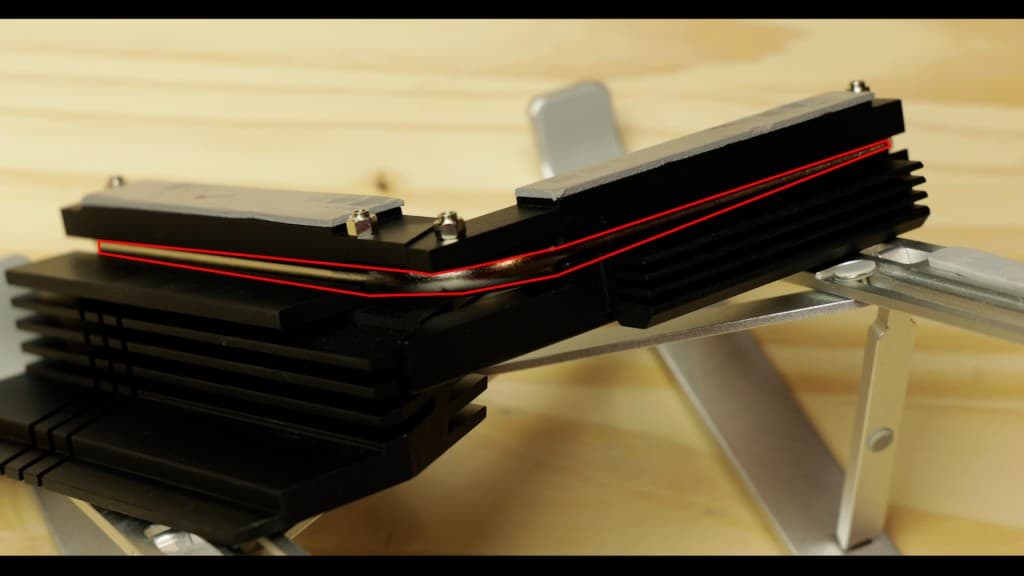
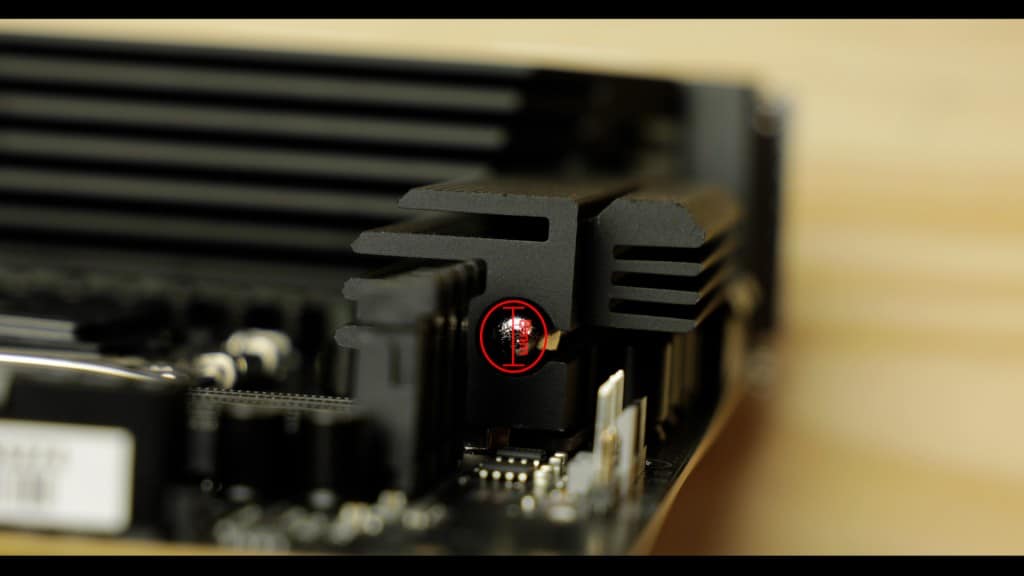
Despite looking identical to its AX counterpart, the very premium 2 VRM block are now linked by a much larger heat pipe, going from 6 to 8mm in diameter for an even better homogenous heat spread.
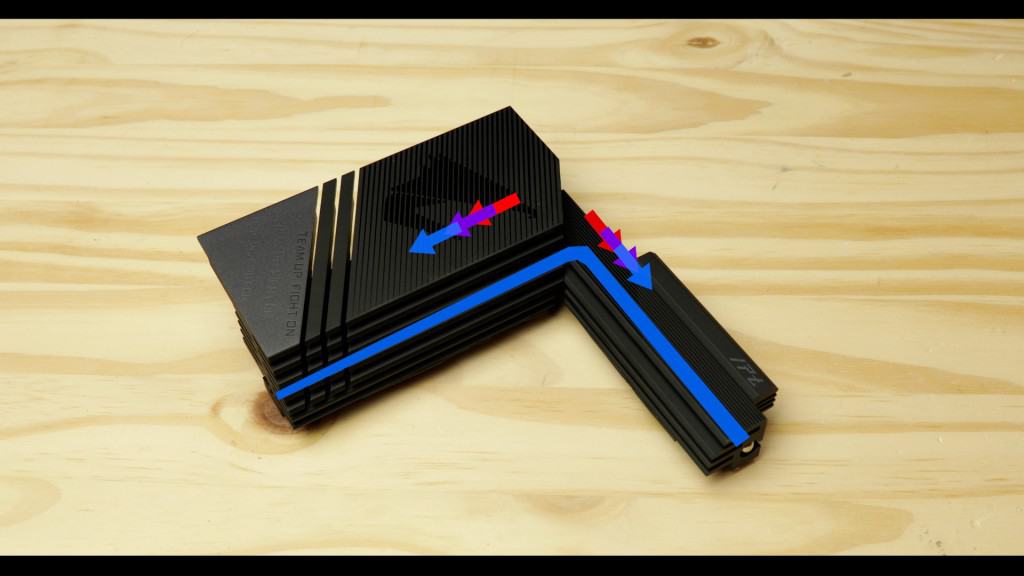
VRM MAIN COOLING BLOCK
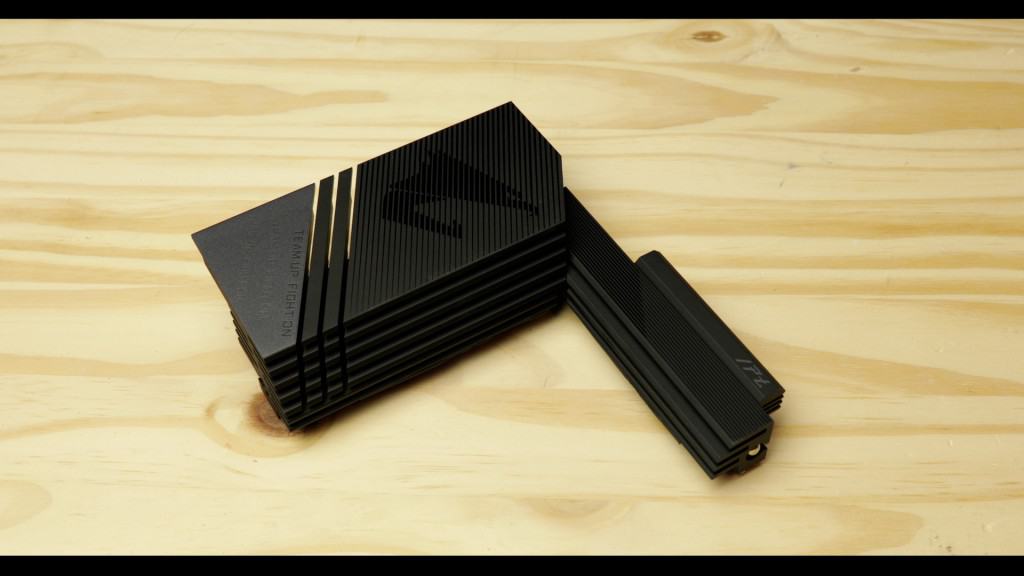
The main block remains this gorgeous massive monolith, founded on that spread wall, supporting a wide, large radiating plate. Gorgeous really.

The all topped by a rather large roof area further adding radiating surface to our main block.
VRM SIDE COOLING BLOCK
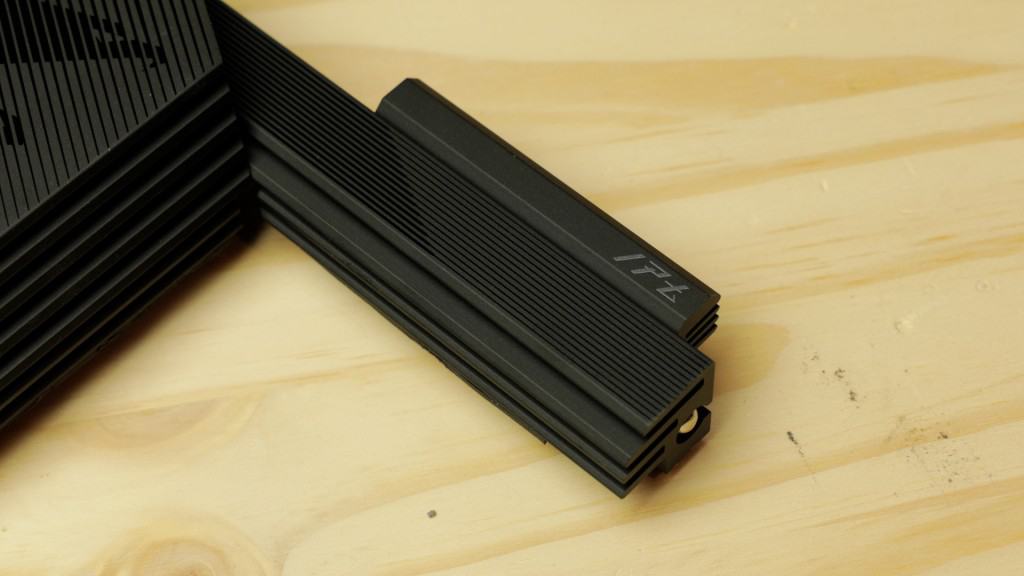
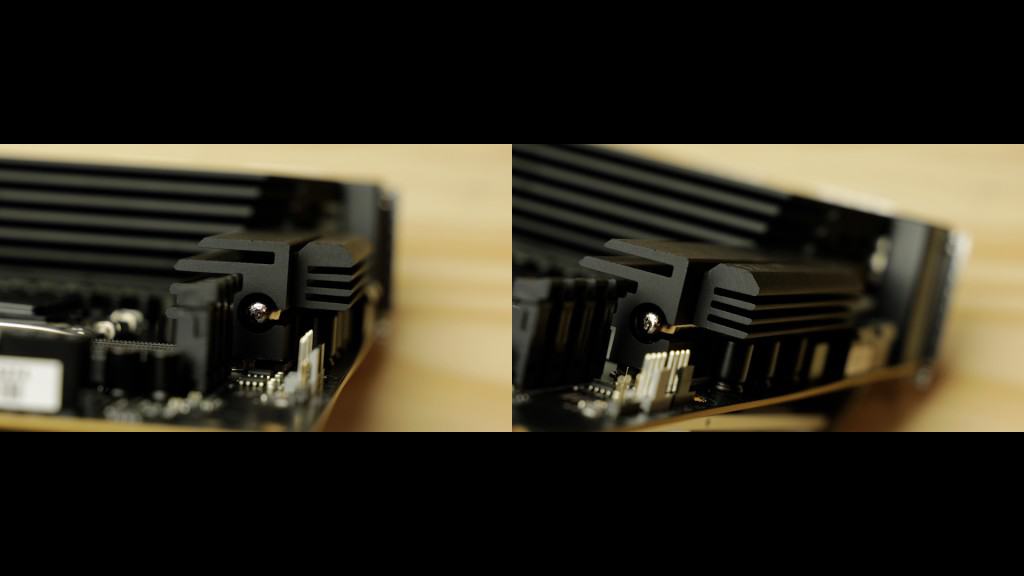
The side block is this more dense piece of aluminum spreading on its sides to exhale heat away.
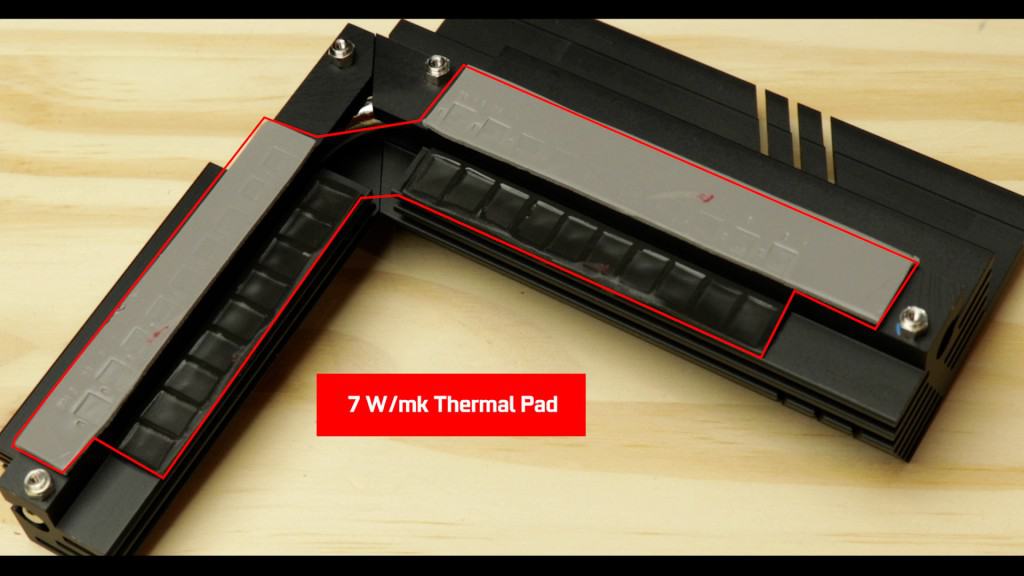
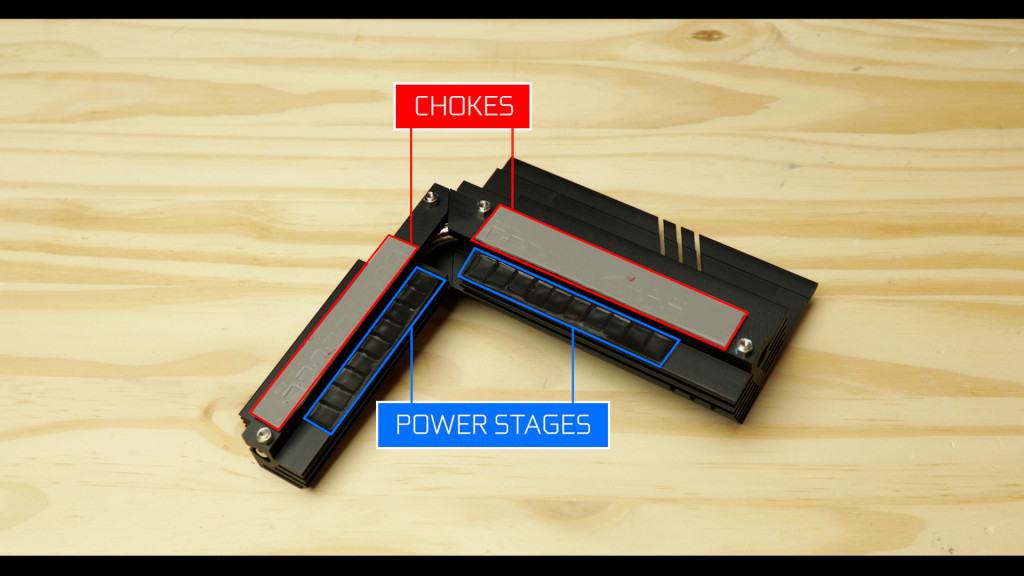
Both do show a large double contact design with, and important to be noted, much better-quality thermal pads than usual, to provide a much intimate heat relief to both power stages and chokes a like.
VRM TEMPS
And results are naturally good!
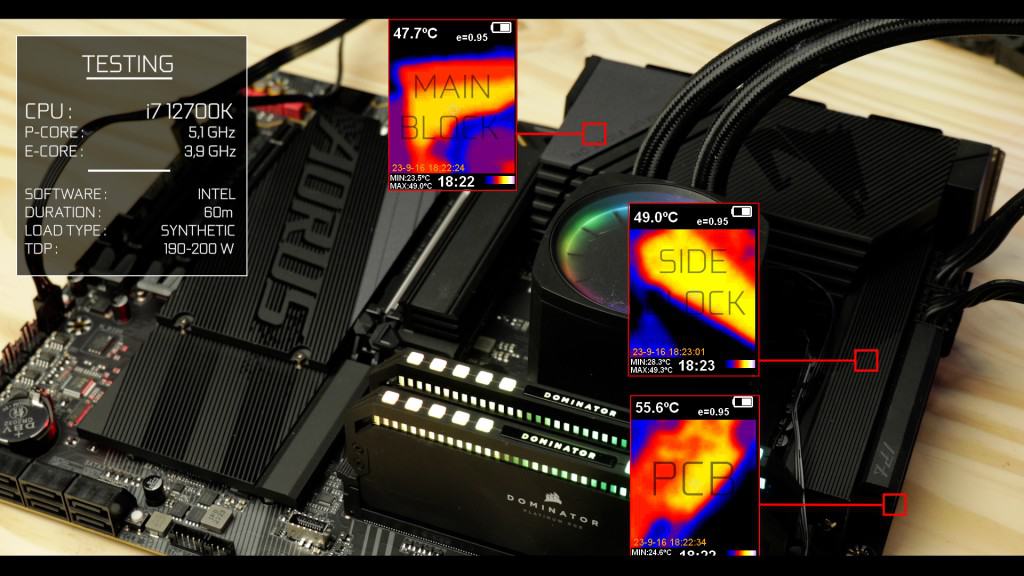
Temp results are unsurprisingly good!
With a moderately overclocked 12700k, and an hour-long synthetic stress test, our VRM block stayed at an impressively low 40c at all time (190-200 TDP). Absolutely stunning results indeed.
Side notes, big kudos to the AIO EKWB NEXUS cooler which kept the CPU below 75c during that torturous stress test!
I would grade this VRM as a solid B++, even maybe an A-. I would note pair this board with anything else than an i7 (or higher) K class processor.
Double Kudos to Gigabyte for this!
RAM
We have a 192 GB DDR5 RAM support, organized in a dual channel configuration and able to clock up to a novel, unprecedented 8,266 MHz! That’s a massive 600 MHz jump when compared to its only 7 months old predecessor, the Z790 AORUS ELITE AX!

If you are ever able to sustain anything close to these kinds of speeds, it will translate in massive productivity gains, ( rendering or video editing ), but also, and for once on the gaming front as well.

This is next gen stuff, and I didn’t expect to see 8GHz clocks before next year boards. So yes!, Big Kudos to gigabyte for pulling this off, really!
M.2 SSD
We got our 4 PCIE 4 M.2 sticks connectors all able to swap data up to a plenty fast 64 Gbs. Obviously, I morn the fact that very few Z790 powered boards allow PCIe 5.0 M.2 connectors, and I’m disappointed to see that the ELITE X WIFI 7 is no exception.
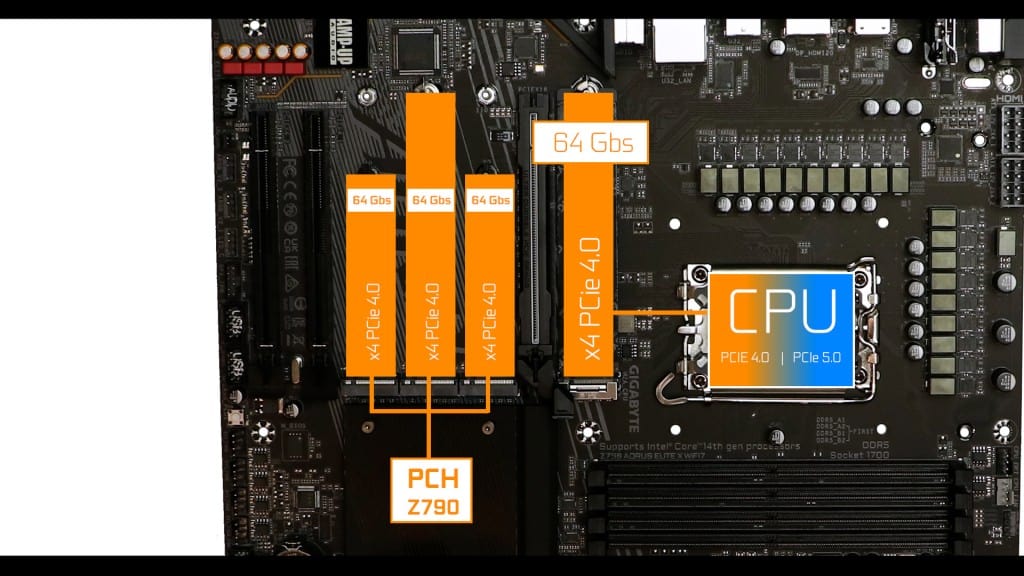
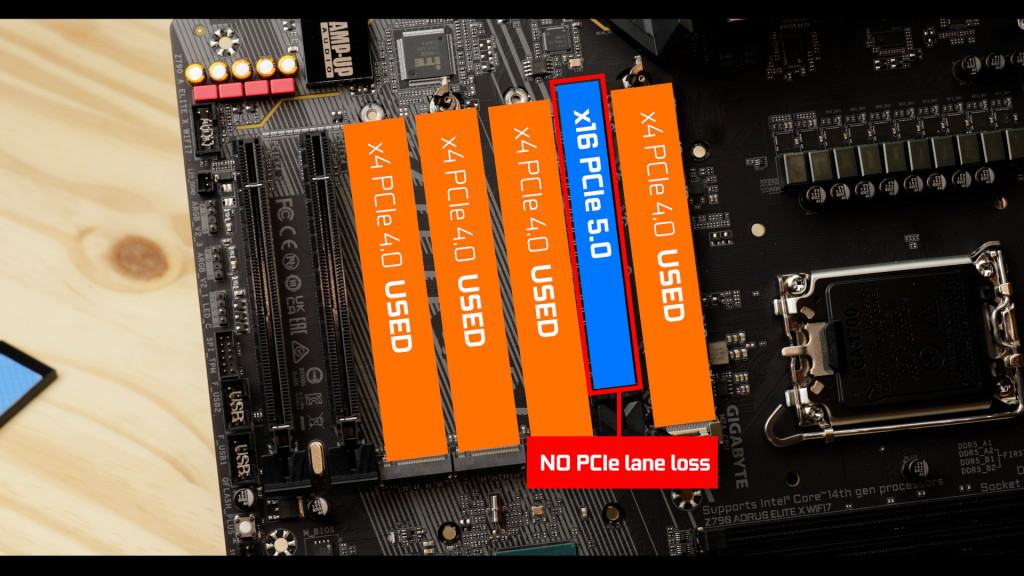
On the plus side, there are not PCIe bifurcations as seen on the disappointing TUF GAMING Z790-PLUS I just reviewed last week.
What you see here, is what you get! In other words, you can use all the M.2 SSDs to their full potential without removing bandwidth from your GPU PCIe export.
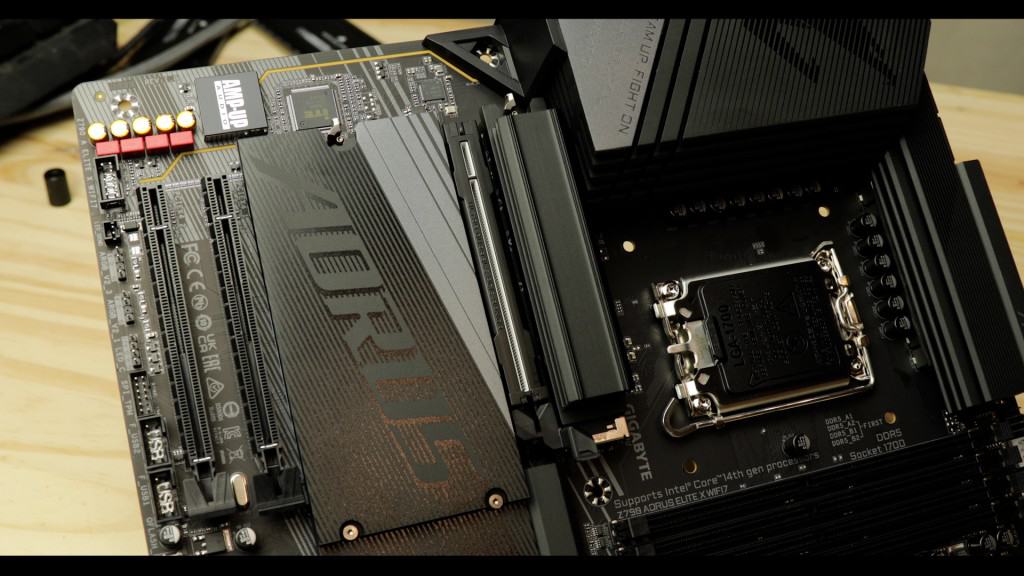
Cooling wise, well, lets first not the extreme focus and care that the CPU linked M.2 SSD connector has received. It is the only one who received a double side thermal pad treatment, and the heat shield, is simply crazy!


It is about 2cm high and features a 3 level winglet structure to dissipate more heat than a 4 lanes PCIE 4 M.2 stick would ever produce. A little over the top in my opinion (pun intended).
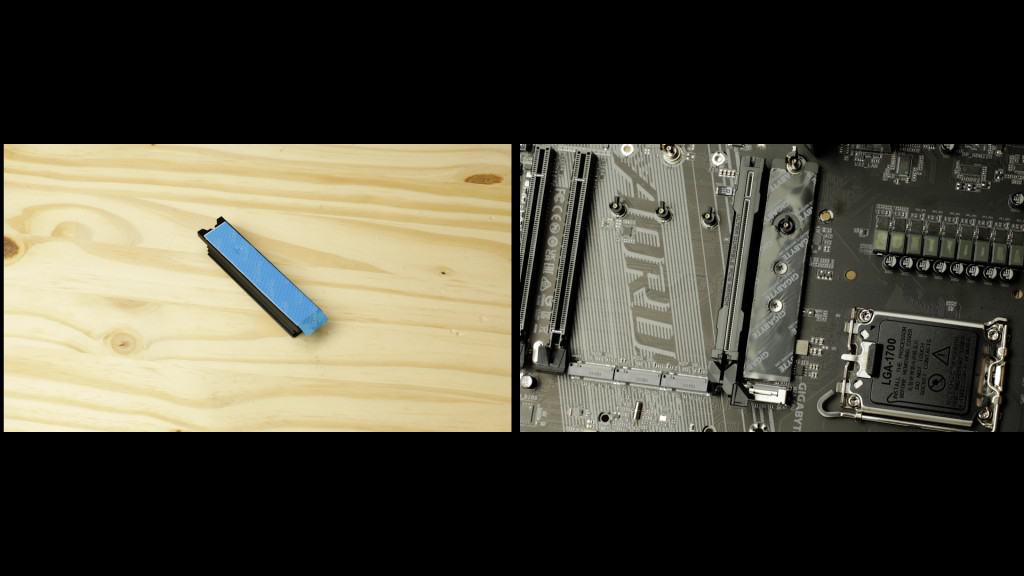
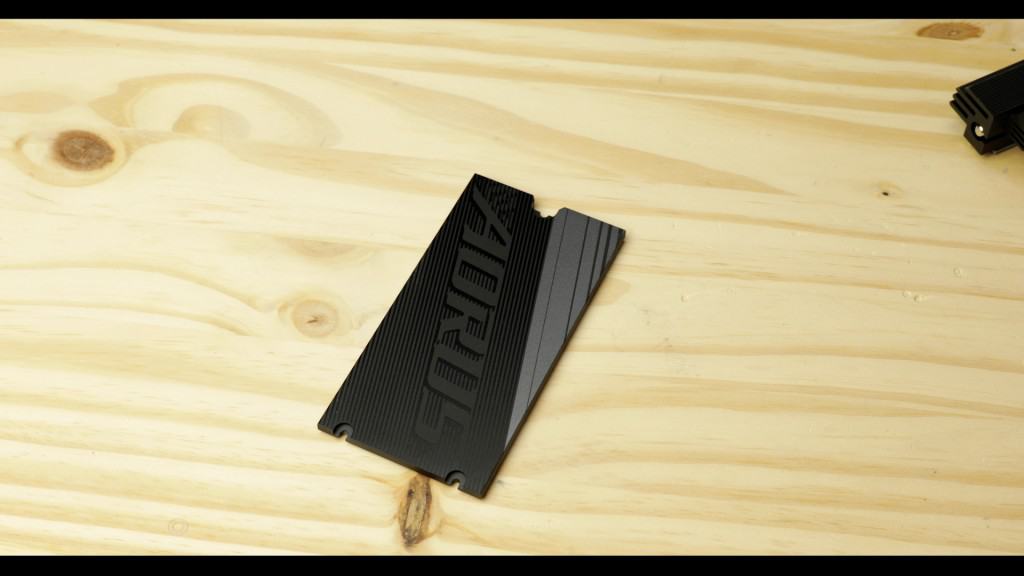
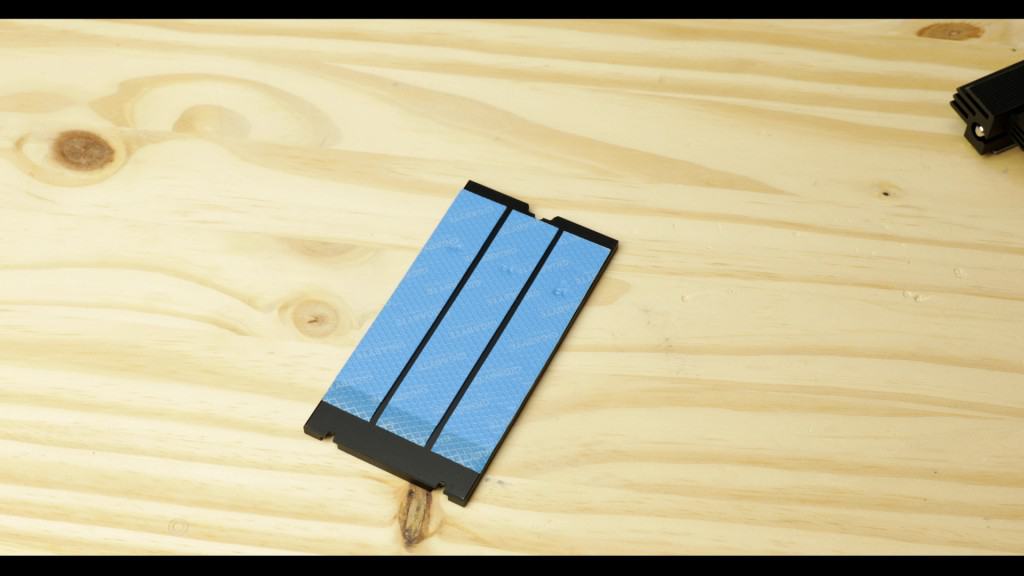
The remaining 3 M.2 SSD all share the same heat plate, which, despite being very thick and long might not be enough to keep a 3 PCIe 4.0 sticks running simultaneously ( as in a RAID configuration). Therefore I would strongly suggest keeping the middle slot vacant to avoid any obvious heat bleeding.
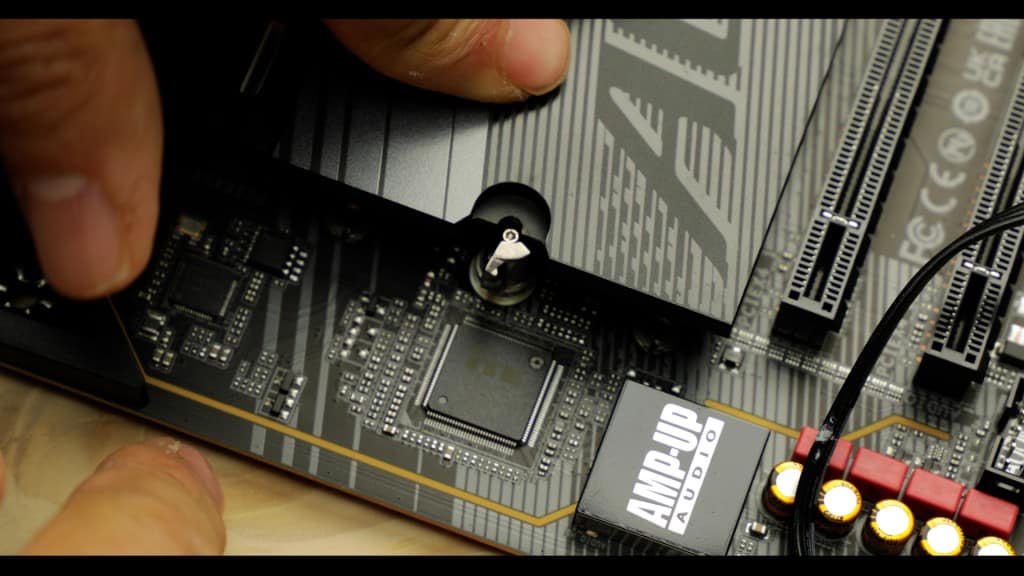
Last but absolutely not least, we have something knew! Unlike its AX counterpart the M.2 SSDs are not only screwless, but all of their heat plates as well! A trend I am starting to see that more and more amongst all the manufacturers, and I love it.
Simple, sturdy, and it works! Love it! love it! Looooove it!
Chipset
Our board is powered by Intel’s now aging Z790 chipset, which still runs at a low 6 Watts, allowing it to keep cool even with a somewhat reduced heat shield.
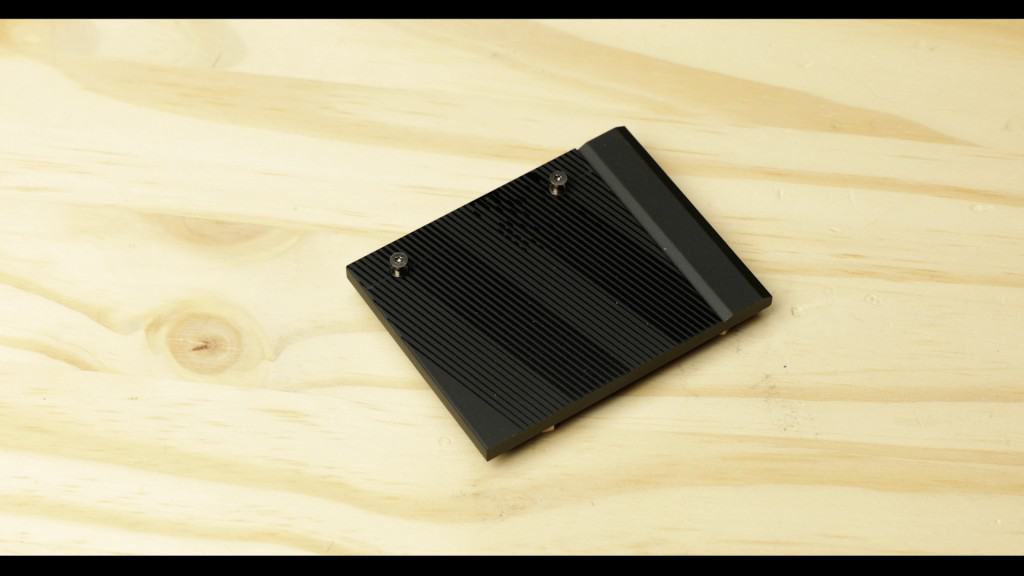
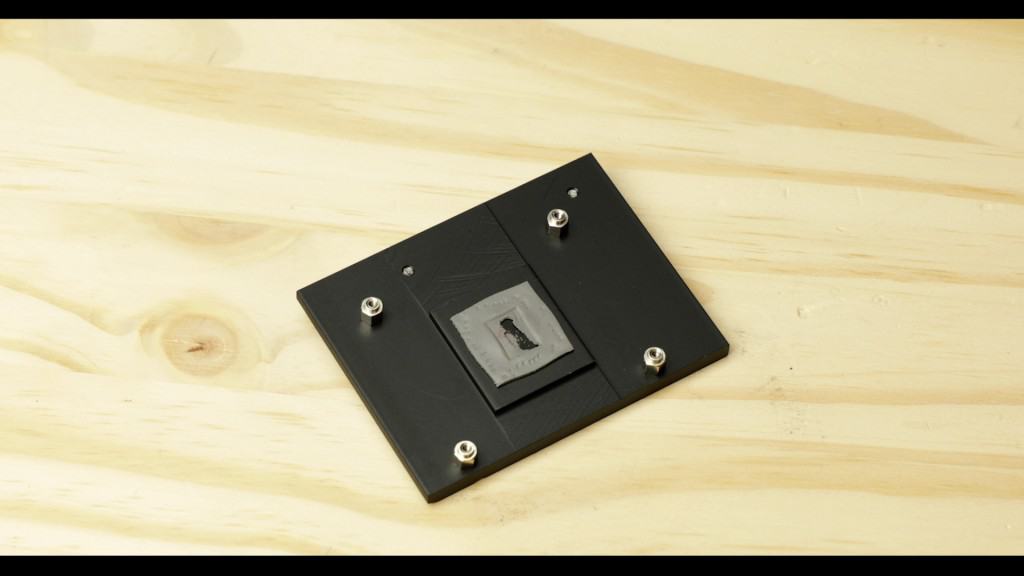
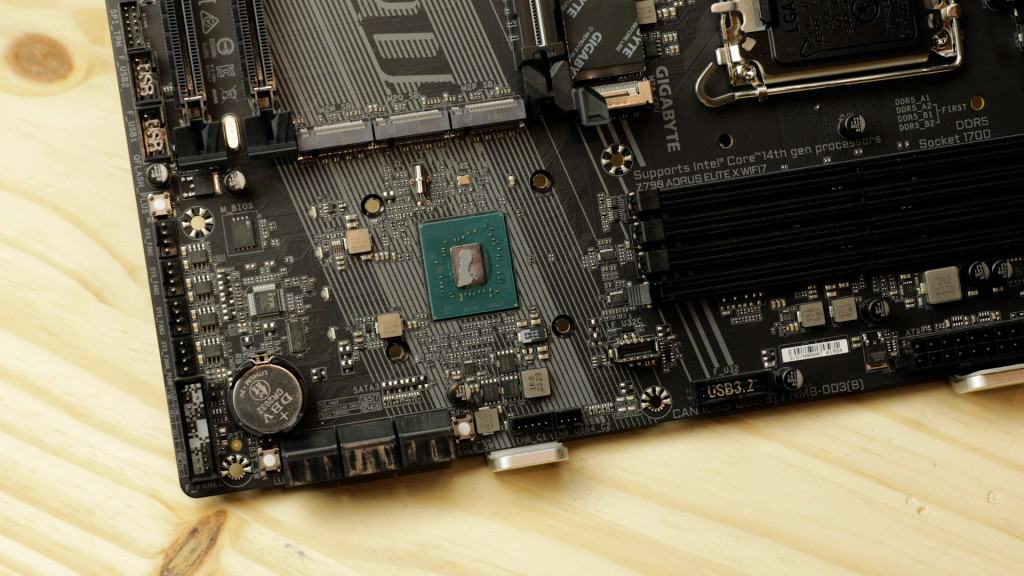
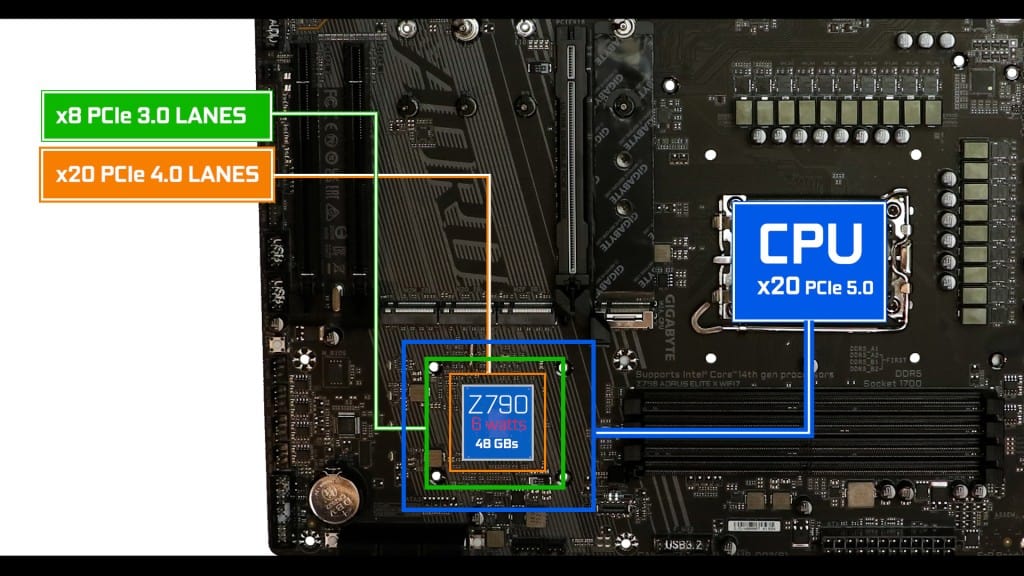
Other than that, we are dealing with a very similar bandwidth menu than seen on its Z690 predecessor. Most of the novelty this year, coming from the 13th and 14th Gen intel CPUs which does provide the only 16 PCie 5.0 lanes you’ll ever see available on a Z790 powered motherboard.
SATA 3.0
For a more classical storage solutions, we have our usual SATA 3.0 plugs. 6 in total, with a transfer rate of 6 Gbps each. They can be configured to run into a 0,1, 5 or 10 RAID configuration.
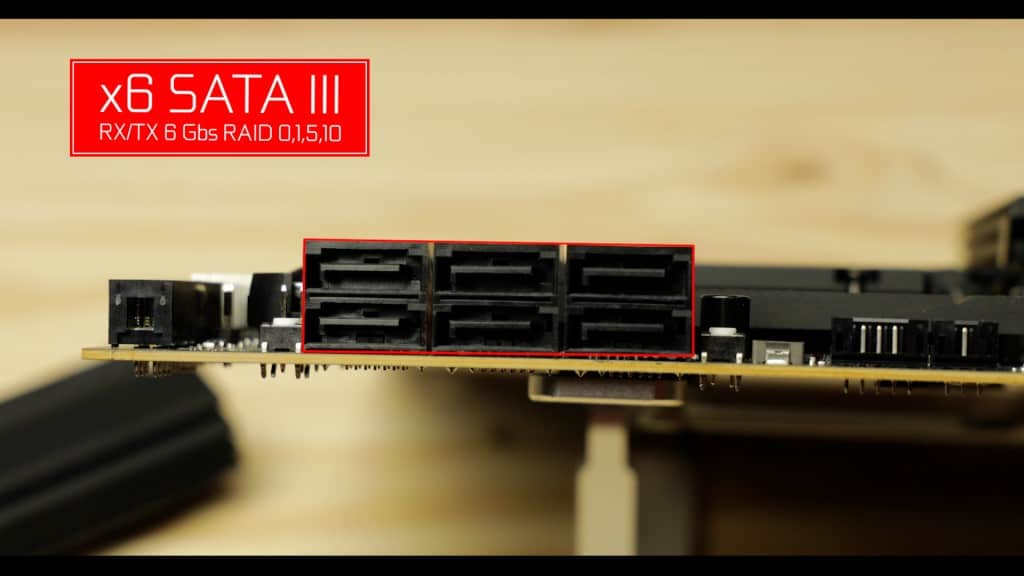
PCIe Slots
We have 3 x16 slots with different speeds.
Only the CPU linked one gets the future proofing PCIe 5.0 treatments on every single of its 16 lanes, allowing a 64 GBs bandwidth in both directions. This is obviously where you’d want your GPU placed for optimal performances hence the metallic re-enforcements.

Let’s note the absence of an extended PCIe release mechanism, present on more premium gigabyte motherboards and I do regret since it is, I believe, something which will really impact your building and upgrade comfort.
The other naked 16 slots run 4 lanes at PCIe 4.0 standard, for 8 GBs worth of bandwidth going both way on each, which would be perfect for some export based storage!
Back IO

First let me note the presence of an IO integrated plate which is always a good point!
- x4 USB 2.0 Gen (480 Mbs)
- x3 USB 3.1 Gen (5 Gbs)
- x5 USB 3.2 2nd Gen all able to transfer data upto 10 Gbs including 1 TYPE-C
- x1 USB 3.2 2nd Gen 2×2 able to transfer data upto 20 Gbs (TYPE-C)
- WiFi 7 (802.11Be / 320 MHz) with a subsistentially higher 48 Gbs transfer rate and a very low latency ( almost fiber grade)
- X2 display outputs for our integrated graphics
- HDMI 2.0 4096×2160@60 Hz HDCP 2.3
- DisplayPort 1.2 4096×2304@60 Hz HDCP 2.3
- x1 2.5 GbE surge protected LAN with modular speed adjustment (100 Mbs, 1 Gbs, 2.5 Gbs).
- ALC 1220-VB from Realtek (ageing but still very premium), serviced by 500 Microfarads of capacitors but most importantly, refined 4 WIMA capacitors, which will bring the audio solution to absolute excellence, both in play back and recording. By far one of the best integrated AUDIO solution you can hope for gamers and streamers alike!
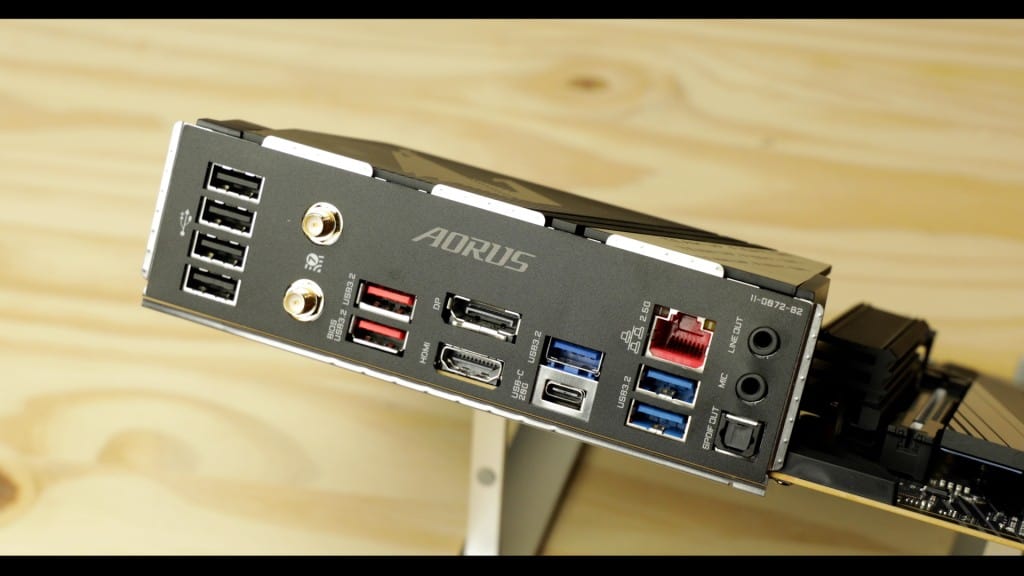
Overall, a rather well equipped and balanced back IO. I do feel like the clear CMOS and FLASHBACK button should have been placed here instead of on the board, but not deal breaker.
I love Seeing the WIFI 7 which truly future proofs the board connectivity! Happy all around.
Front Panel Connectors
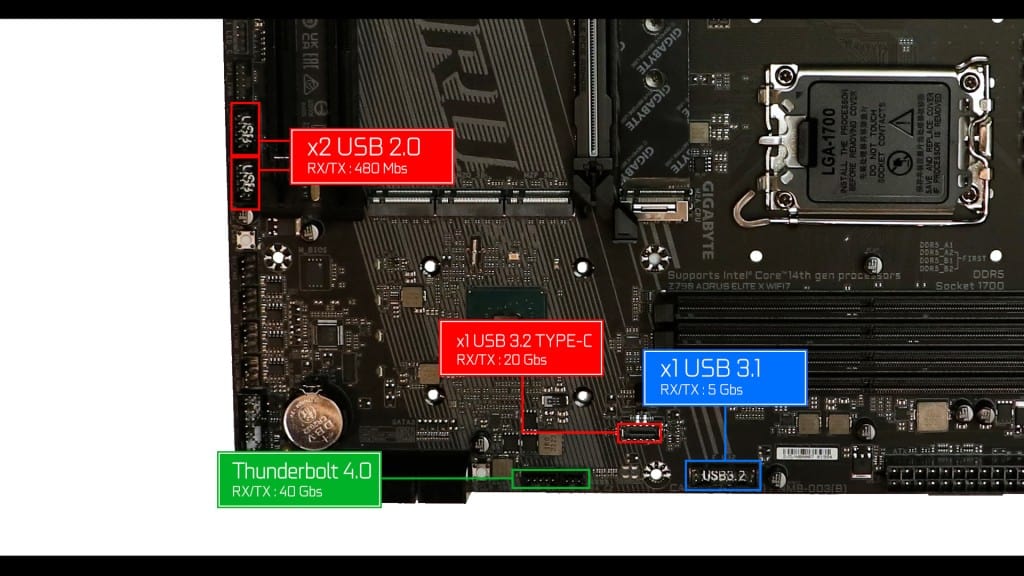
- x2 USB 2.0 (480 Mbs)
- x1 USB 3.0 (5 Gbs)
- x1 USB 3.2 2nd Gen 2×2 (20 Gbs) + fast charge upto 30 watts
- x1 Thunderbolt 4.0 card connector (40 Gbs)
Adequate.
Cooling connectorsCooling wise,
Our board is no custom water cooling champion, that’s for sure, but it does come with everything ull need to operate either a solid air cooling or an AIO water cooling solution, meaning 6 PWM fan connectors, one of which can support a AIO water pump.
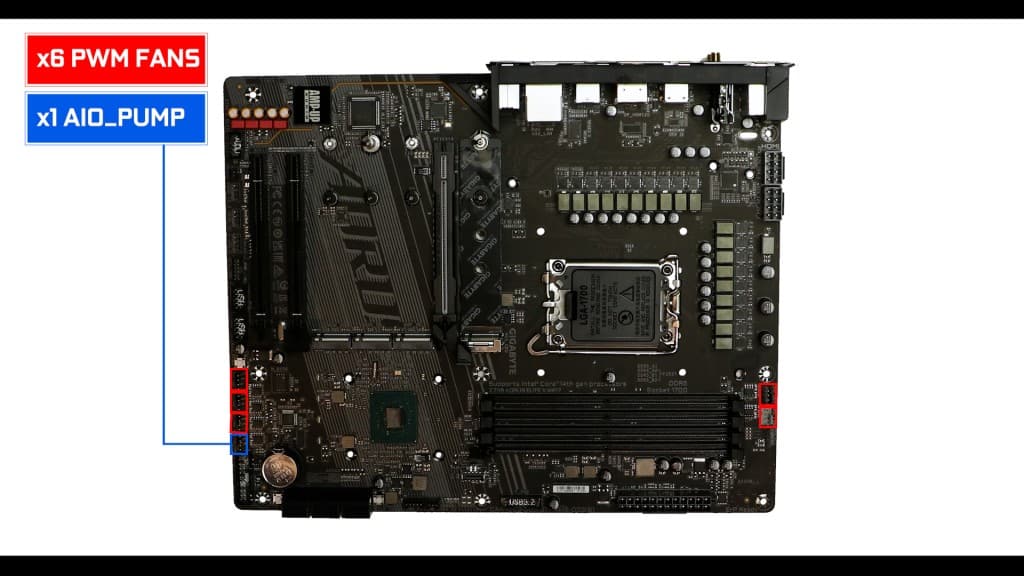
For some reasons gigabyte is departing the hybrid connectors realm they use to have which gave such versality to their boards and reverted back to a more classic individual use connectors. Something I regret and hope to see hybrid connectors back soon!
We do have a bit more to play with than usual, which is always a good thing.

We got a Q flash button for a CPU less BIOS upgrade, a must in my opinion, as well as a clear CMOS switch from a quick factory reset if necessary.
In addition we have our loyal EZ DEBUGGER here to give us a general indication of where your booting issues come from.
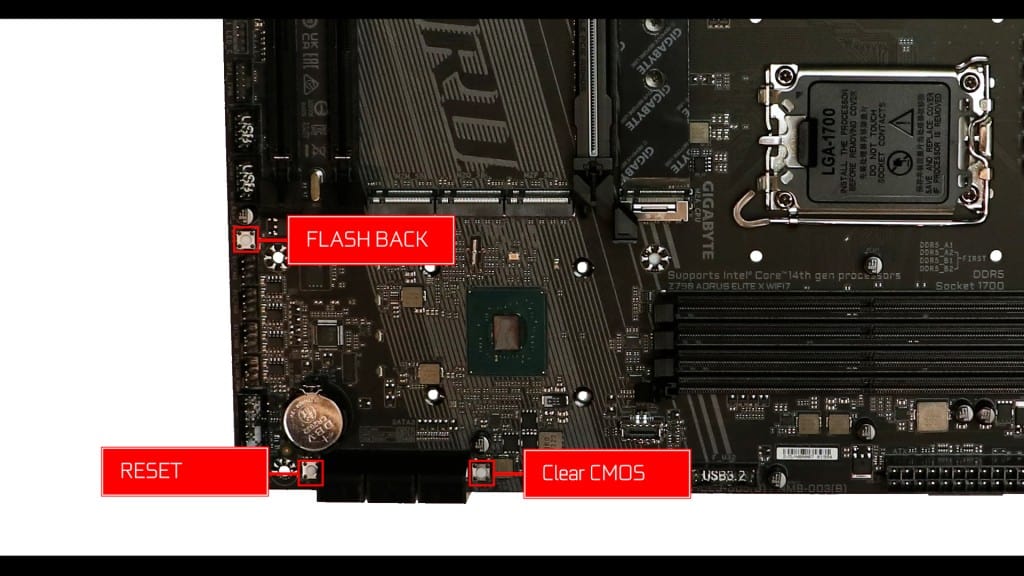
At this price point I do think that this board SHOULD have came with and ERROR screen to help refine our troubleshooting experience.
And seeing how premium the rest of this board is, I really don’t see why it has not been included here.
RGB FUSION Sync Effect
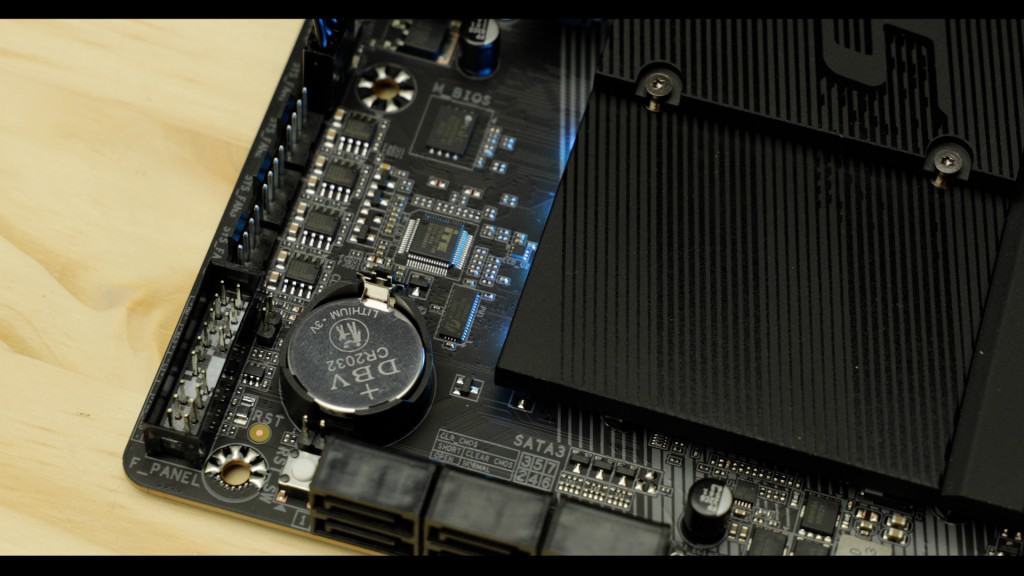

RGB WISE we don’t have much going on other than a rather useless RGB strip hidden under the chipset heat shield.
On mid-budget boards, I would much rather see no RGB strips at all as they don’t really flatter any parts of the product aesthetic.
I’d much rather give the full liberty to the user through the RGB connectors:
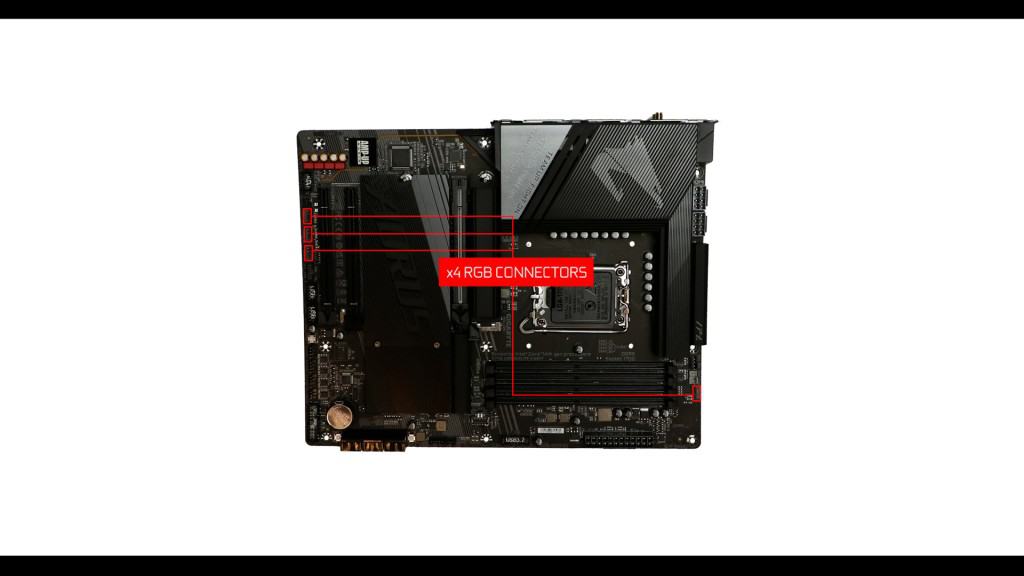
- x1 classic RGB Connectors
- x3 addressable RGB Connectors
All of the above are obviously fully customizable (and sync-able) through GIGABYTE very own FUSION software.
CONCLUSION
The Z790 AORUS ELITE X WIFI 7 will cost you 300 USD before taxes, which was the launching price of its earlier edition, the Z790 AORUS ELITE AX, and, truth be told, I do feel bad for the ones who bought that earlier variant.
The Z790 AORUS X WIFI 7 version brings so much more to the table, both in terms of specs, and premium-ship. And more than improvements, there are a few innovative moves here :
- The screwless storage heat shield, the WiFi 7 and the ludicrous RAM Clocks!
- The VRM has also been quite a bit increased, and its cooling solution has largely been revisited.
- The entire foundation of the board, its PCB has been brough from 6 to 8 PCB layers which on its own merit places the Z790 AORUS ELITE X WiFi 7 on a very different market segment.
As for the ASUS and MSI competition goes, AORUS just sent them back to class, and gave them a lesson on what a 300 bucks board should look like today!
I think this boards robs a lot from usual market players, and I am already worried for its PRO version, which I am about to review next!
In a nutshell, if you are on the market with for the best value 300 bucks will buy you, this is where your money wants to be!

 WiFi 7
WiFi 7 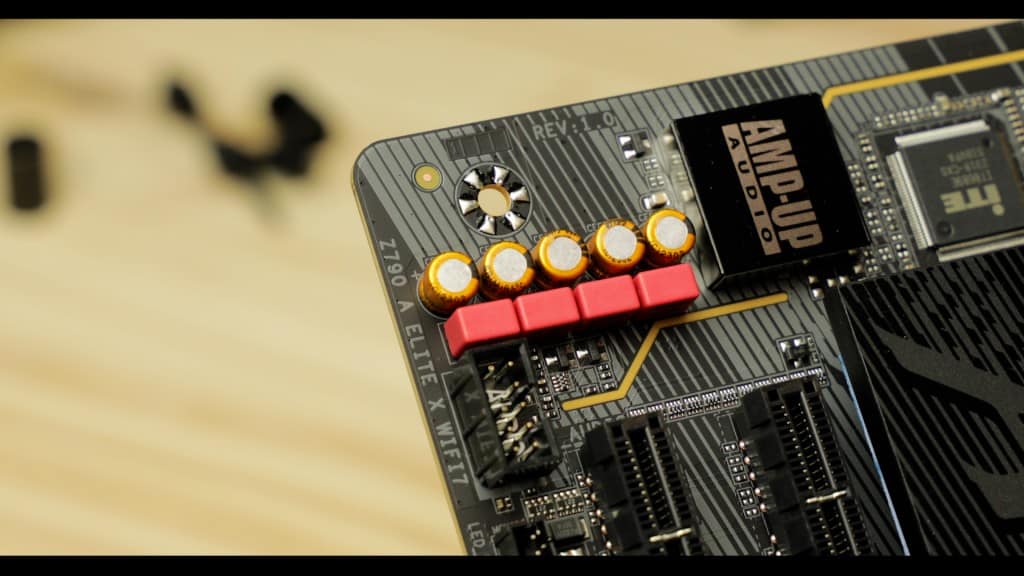
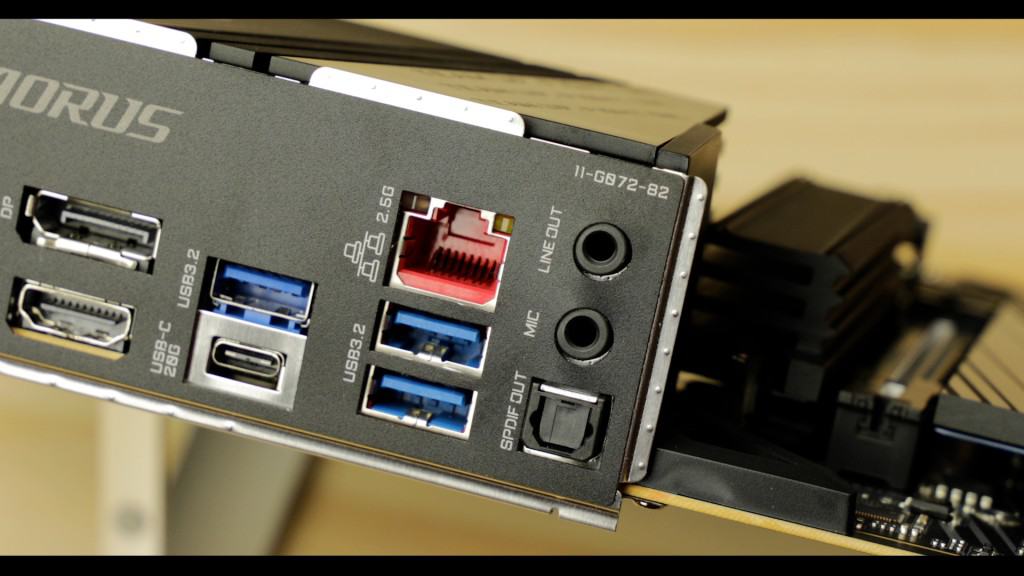
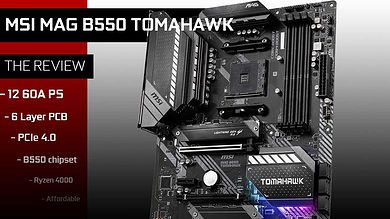
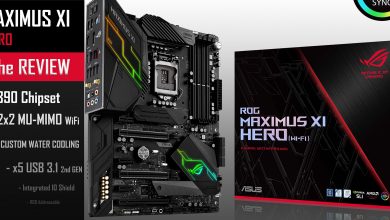
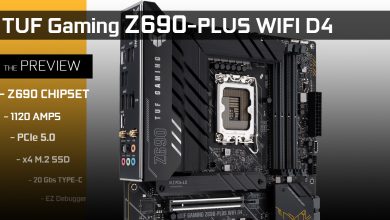
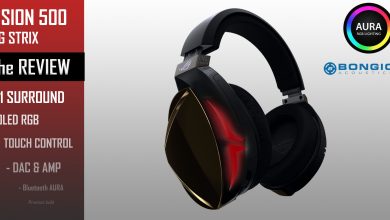

You forgot to mention that the nvme slot next to the cpu shares bandwidth with two sata ports so those get disabled . Also you say
x3 PCIe x16 ( x1 PCIe 5.0*16, x1 PCIe 4.0*4, x1 PCIe 4.0*4 )
This is confusing to me since x1 to me is the cpu lane speed. I would do 3x PCIe x16 ( 1x PCIe 5.0*16, 1x PCIe 4.0*4, 1x PCIe 4.0×4
Etc
point taken 🙂
I absolutely agree that this motherboard is great for most people, the features for the price beat the competition, 8 layer pcb for this price point is great, VRM very acceptable and enough to even OC. Was looking at all boards and couldn’t convince myself to buy something else even after I tried hard. Asus fan boy here and I’m doing a full gigabyte build, says it all.